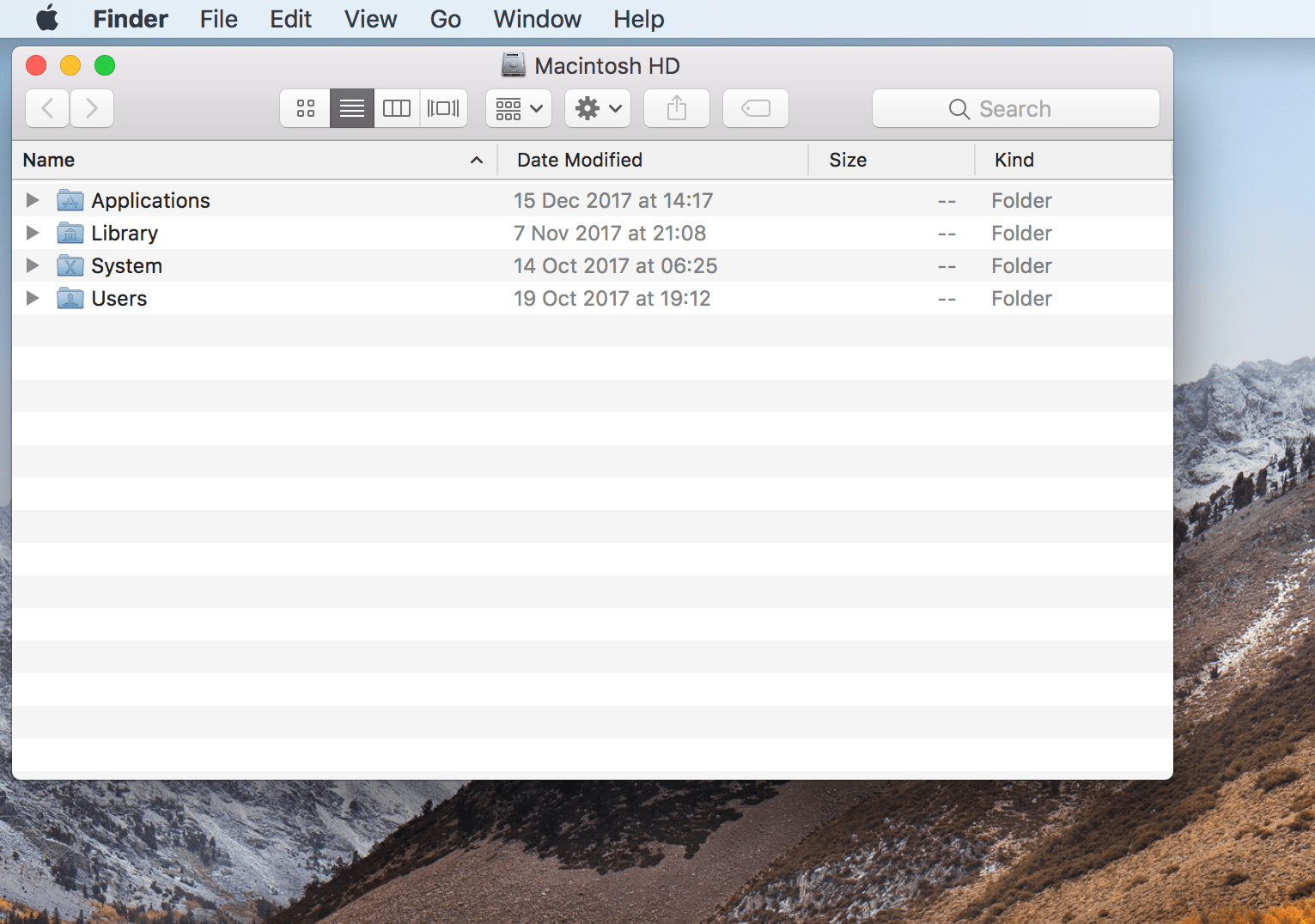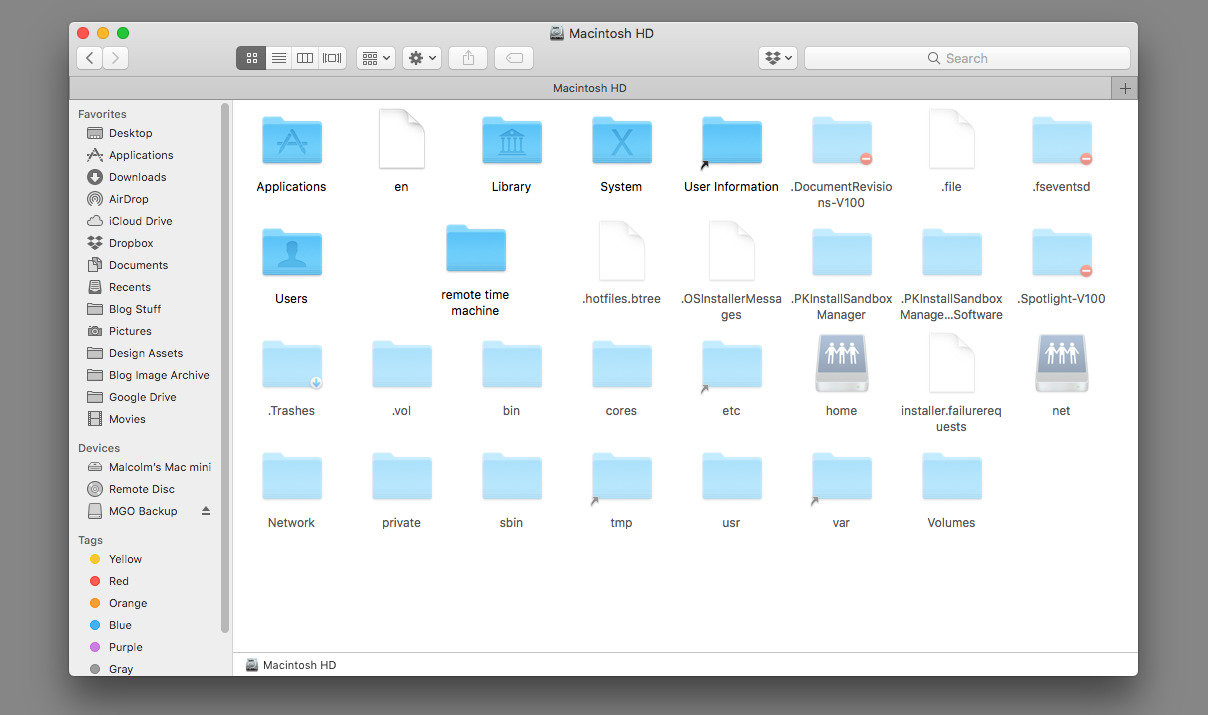Oct 14, 2018 If you do not know what a file’s purpose is, leave it alone. Some files are critical to the proper functioning of your Mac. Apple recently added an easy way to view invisible files. Starting with macOS Sierra (aka macOS 10.12), one can press Command-Shift-Period to view invisible files. The files are made visible but displayed in a lighter color. Feb 21, 2020 Mac file recovery software supports you to find and restore all hidden files on Mac computer or external storage devices with simple clicks. Download for Mac Download for PC Recently we got a question from a user whether it is possible to find files that are hidden on a mac hard drive. How to Show Hidden File on Mac in Easiest and Fastest. Without using the terminal, you can still recover the hidden file on your Mac. There are some easiest solution and the new favorite way to recover the hidden files on your Mac. It is by using the shortcut. Since there is Mac Sierra, now there is a shortcut to reveal the hidden files. Jun 08, 2016 Show Hidden Files Mac OS X El Capitan: Click “Finder” icon on your Mac dock. Open Terminal. Terminal is a utility that provides access to the OS X El Capitan operating system. It can be opened in one of two following ways: Select “Applications” on the left side, then on “Utilities“, and double-click on “Terminal“.
- Show Hidden Files Mac Catalina
- Hidden File Apps For Mac Windows 10
- Hidden Files Mac Delete
- Delete Hidden Files On Mac
Did you know that there are thousands of invisible files on your Mac? Have you ever needed to locate or delete one of these invisible files? Here are a couple of ways to be able to access the invisible files and folders on your Mac. A cautionary note, Apple makes these files invisible for a reason. They do not think the typical person needs to access these files and they are right. However, there are instances, such as when one is trying to manually uninstall an application or troubleshoot a problem that one needs to be able to access the invisible files on one’s Mac.Please be cautious when working on files that are typically invisible. If you do not know what a file’s purpose is, leave it alone. Some files are critical to the proper functioning of your Mac.
Apple recently added an easy way to view invisible files. Starting with macOS Sierra (aka macOS 10.12), one can press Command-Shift-Period to view invisible files. The files are made visible but displayed in a lighter color. Press Command-Shift-Period a second time to make the files invisible again. If your Mac is running an older version of the Mac operating system then one could use a third party application like InVisible (free, donations accepted). InVisible 2 currently requires OS X Mavericks (aka OS X 10.9) or newer.
Often I do not really need to view all invisble files. Instead, I just want to be able to find one or more invisible files. For this, I use EasyFind, a free application made by Devon Technologies. For example, I recently wanted to completely remove an application named Hermes from my Mac. I know the application would create some preference files and cache files which are typically stored inside of invisible folders. I used EasyFind to search for all files with the word Hermes in its name. There is a checkbox on the left side of EasyFind’s main window that let’s me instruct it to include invisible files and folders.
Your Mac has a secret. Thousands of them in fact, in the form of hidden files and folders lurking on its hard drive or SSD. Don’t worry, though. These files and folders are all supposed to be there. In fact, many of them are essential.
Many of these files are in your Mac’s main Library folder or in the ~/Library folder, which is in your User folder. Both these Library folders are hidden, but inside them are folders and files that hold things like preferences for apps.
In this article, we’ll tell you how you can view hidden files on your Mac and make your Library folder visible.
What are the hidden files on Mac?
The hidden files are a throwback to macOS’ Unix roots. In fact, the convention of naming them starting with a “.” comes from Unix. For that reason, you can’t use a “.” at the start of a regular file name, otherwise OS X will hide it.
The files themselves contain data like access rights and privileges for files and folders, application support files, and preferences.
There are a number of reasons files and folders are hidden. Mostly, though, it’s because they contain data critical to the smooth running of your Mac and that you shouldn’t interfere with. In addition, there’s no real reason for most users to see or access them. Also, if they were all visible, your Mac would look horribly cluttered.
How to view hidden files on Mac
Before you make your Mac show hidden files, it’s important to remember they’ve been hidden for a reason. The data they contain could cause havoc if you delete or alter it and don’t know what you’re doing.
If your goal in viewing, for example ~/Library is so you can manually delete application support files for a program you’ve uninstalled, consider using a dedicated uninstaller like CleanMyMac X. That will make it easy to remove all the files associated with an application with one click. You can download CleanMyMac X for free here.
CleanMyMac X will also allow you to get rid of all the hidden files you no longer need. Many of these files are created and used then not needed anymore. They just sit there clogging up your hard drive. CleanMyMac X scans your Mac, identifies this system junk and allows you to quickly and easily get rid of it, potentially several gigabytes of disk space.
If you still want to view hidden files on your Mac, you need to go to the Finder and do the following:
Show Hidden Files Mac Catalina
- Open a new Finder window and click on the name of your Mac under ‘Devices’ in the sidebar.
- Click on Macintosh HD, or whatever you’ve called your startup drive if you’ve renamed it.
- Press Command-Shift-. (period). You should now see lots of files and folders who’s name starts with “.” become visible.
- To re-hide the files and folders, hold down Command-Shift-. again.
How to view your Mac’s ~/Library folder
There are a couple of methods for making your ~/Library folder visible. Here’s the simplest:
- Click on the Finder in the Dock.
- Open a new Finder window and navigate to your user folder (Tip: if it’s not in the sidebar, go to the Finder menu, choose Preferences, click Sidebar and check the box next to your Home folder)
- Click on the Go menu.
- Hold down the Option (Alt) key.
- You should see that in the dropdown menu, Library appears below Home. Click on it.
Hidden File Apps For Mac Windows 10
Alternatively, do this to view your Library folder:
- Click on the Finder in the Dock.
- Click on the Go menu and choose Go to Folder.
- In the window that opens, type “~/Library”
With both these methods, your Library folder will disappear again when you close the Finder window. It’s easy enough to run through the steps above again to make it visible again when you need to, but if you want it permanently accessible, there are a couple of ways to do it.
The quickest is to drag the Library folder to the Finder’s sidebar. That will create a shortcut to it that will persist. If you want to keep ~/Library visible but don’t want it clogging up the sidebar in Finder windows, do this:


- Click on the Finder in the Dock.
- Click on the View menu and choose Show View Options.
- Check the box labelled Show Library Folder at the bottom of the window.
How to make macOS show hidden files using Terminal
If you’re feeling particularly adventurous, you can use the Terminal command line interface to view hidden files and folders. Here’s how to do it:
- Open Terminal from the Utilities folder in Applications, or by searching for it using Spotlight. You can also use the Go menu in the Finder to go directly to the Utilities folder.
- Type, or copy and paste, this command: defaults write com.apple.Finder AppleShowAllFiles true
- Press Return
- Type: killall Finder
To hide the files again, repeat the above steps, but replace ‘true’ with ‘false’ at the end of step 2.
How to hide any file or folder using Terminal

Now that you know how to view hidden files and folders on your Mac, you may be wondering how you can hide other files or folders, to keep them away from prying eyes. There are a number of third-party applications and utilities that offer to do this for you, but you can do it yourself in Terminal, like this:
- Launch Terminal.
- Type: chflags hidden
- Press the spacebar.
- Drag the file or folder you want to hide from the Finder onto the Terminal window.
- You’ll see the path to the file or folder displayed in Terminal after the command you typed.
- Hit Return to execute the command.
The file or folder you dragged onto the Terminal window will now be hidden. To see it again, use one of the methods described above to see hidden files.
Hidden Files Mac Delete
To make the file visible permanently again, use the steps above, but in step 2 type: chflags nohidden
As you can see, viewing hidden files and folders on your Mac is very straightforward. There are a number of ways to do it, and you can make them visible temporarily or permanently.
However, just because you can view hidden files, doesn’t mean you should — the files are usually hidden because accidentally deleting them or altering them could cause chaos on your Mac. So, while it’s fine to have a peek, don’t do anything with the hidden files unless you know what you’re doing.
Delete Hidden Files On Mac
If you want to declutter your Mac or uninstall applications, use a dedicated application like CleanMyMac X. It will safely remove all useless files, add-ons, broken login items, caches, large and old files you didn't know about. Most likely, you won't even need to look for hidden files — CleanMyMac will do all the job for you.
We also showed that many of those files are stored in Library folders, including the one in your User folder, ~/Library. That folder is hidden by default, but you can view it or make it permanently visible using the techniques described above.